#Kyrill & Method
Text
Von Kirchen, Klöstern, Kathedralen
Bulgarien zum Niederknien
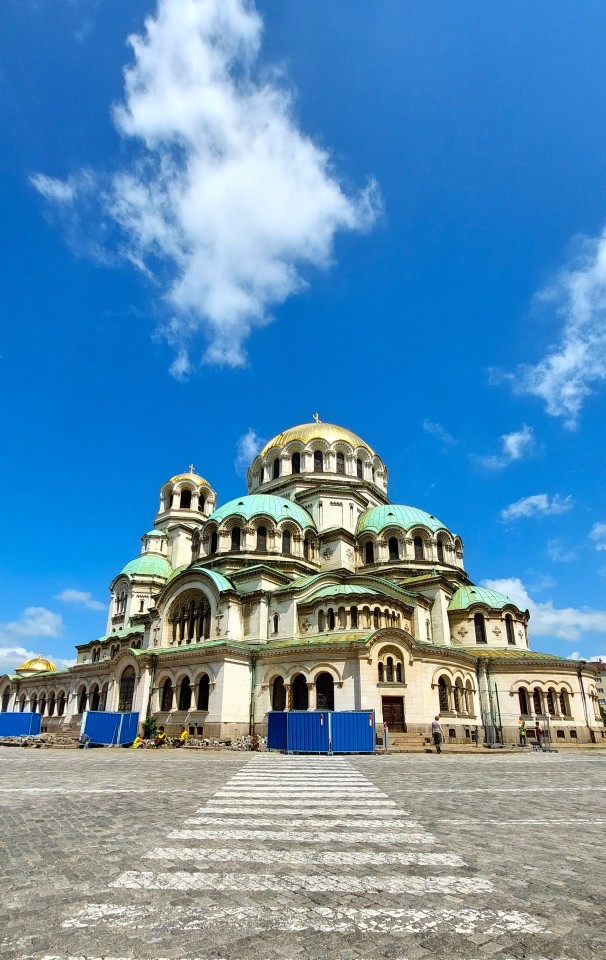
Alexander Nevski Kathedrale
Das Kloster Rila

Das Rila Kloster
Inmitten von Braunbären, Blaubeeren, Raubvögeln und Wölfen, im wirtlichen Wald in der Gegend um Rila, heutzutage zwei Autostunden von Sofia entfernt, vor tausend Jahren abseits der Welt, lebte einst der Eremit und Mönch Ivan Rilski. Bewundert und befeindet von den Menschen umliegender Gehöfte, fristete er ein karges Leben, das hauptsächlich aus Gesprächen mit Gott bestand, später aus dem Heilen Kranker.

Die Magie der christlichen Kirchenkunst
Bald schon sprach sich die Kunde seiner heilsbringenden Konsultationen herum. Kranke wurden gesund, Siechende fanden zum Leben zurück. Aus anfänglicher Ablehnung wurde Bewunderung, Anbetung. Auch Majestäten fanden den Weg in den Wald. Das heilsbringende Mönchlein wurde landesweit bekannt. Legenden sprechen sich schnell herum und werden zur Wahrheit – so man dran glaubt. Und das taten die Bewohner rund um Rila. Die Kunde sprach sich kreuz und quer im Karpatenlande herum. I, Laufe der Jahrhunderte geriet die Klause zum geistlichen, kulturellen Zentrum des bulgarischen Balkans.

In anderen Welten
Weder die Osmanen, noch die Griechen, schon gar nicht die Nationalsozialisten oder Kommunisten konnten das im Wald versteckte Kloster dem Erdboden gleichmachen, obwohl sie allesamt nicht unbeträchtliches Interesse daran hatten. Das Corpus delicti übertauchte Brand und Brandschatzung. Nicht mal die Kreuzfahrer der Neuzeit, die Touristenmassen, können dem prachtvollen Kulturschatz an den Kragen. Allerdings – die Besatzung des geschichtsträchtigen Klosters, einstmals rund vierhundert Pax, schrumpfte im Laufe der Zeit dramatisch. Heute leben nur mehr sieben Aufrechte hinter den immer noch frommen Mauern. Sogar das Umfunktionieren der Mönchszellen zu preisbrecherischem Airbnb-Angebot schmälert die christlich-orthodoxe Bedeutung der Klosteranlage nicht. Wer frei von weltlicher Begehrlichkeit ist, der werfe den ersten Stein. Auf jenen Frommen freilich wartet man hier schon seit langem vergebens.
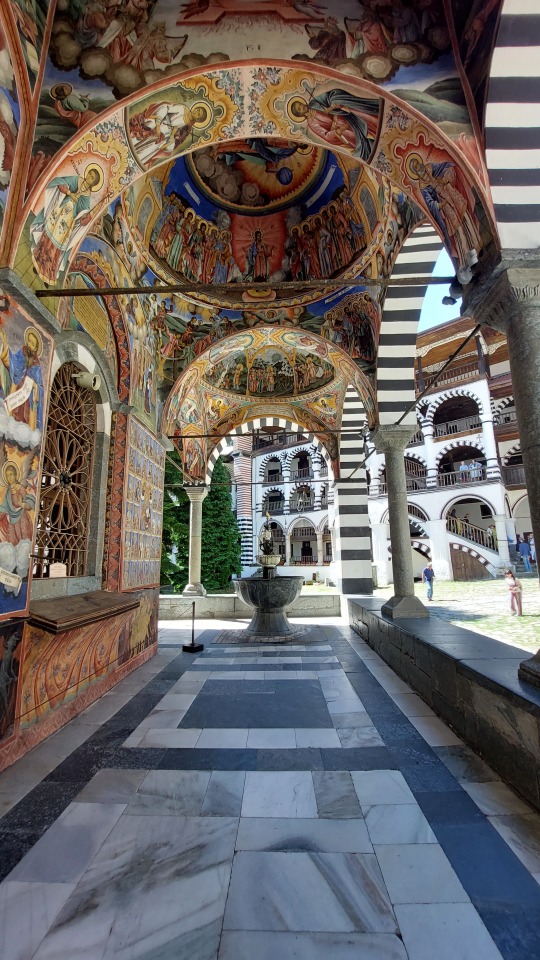
Der prächtige Säulengang
Kirche der Sieben Heiligen
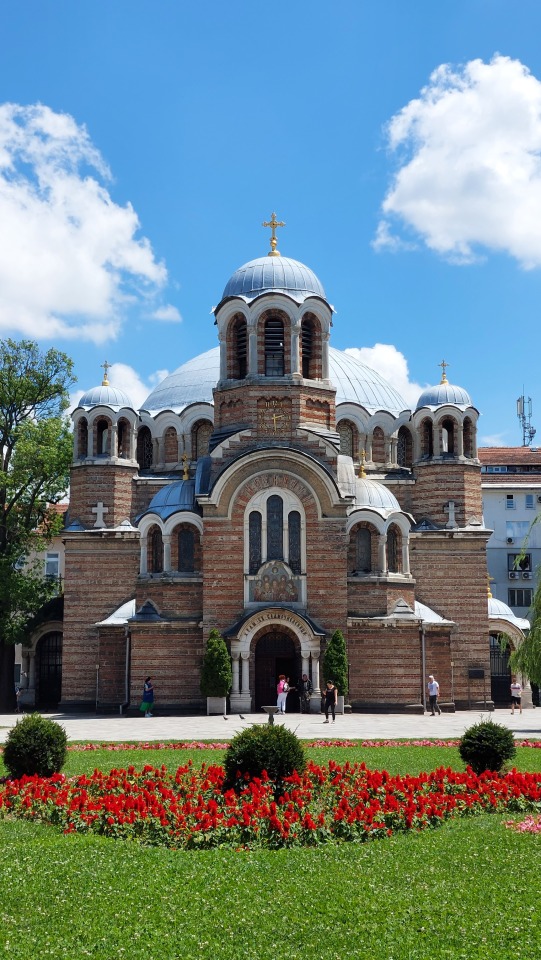
Kirche der sieben Heiligen
Eine ganz andere Geschichte erzählt das Gotteshaus der Sieben Heiligen, nahe dem Slaveykov-Platzes, Ecke Graf-Ignatiev-/Ecke Ivan-Shishman-Straße. Die schöne Kirche ist zwei Männern geweiht, deren Wiege in Thessaloniki stand und die ihr Leben der christlichen Missionierung slawischer Völker weihten, im neunten Jahrhundert kein leichtes Unterfangen. Die beiden Brüder Konstantin und Michael machten Karriere: Sie wurden zu verehrungswürdigen „Slawenaposteln“ und Heiligen – und entwickelten ganz nebenbei die glagolitische Sprache und die kyrillische Schrift. Man hat ihnen ein würdiges Angedenken gewidmet. Das Denkmal der beiden Pioniere in Sachen Christentum und Buchstaben, Kyrill und Method, hat einen würdigen Platz. Es steht vor der imposanten Nationalbibliothek. So wachen die Beiden für alle Zeiten über Millionen von Büchern. So soll es sein.

Kyrill und Method
Basilika Sveta Sophia

Basilika Sveta Sophia
Vor dem roten Backsteinbau einer der ältesten Kirchen Osteuropas, steht ein erstaunliches Monument. So ehrwürdig alt das Gotteshaus auch ist, es datiert bis in frühchristliche Zeit zurück, so jung ist das Standbild von Zar Samuil, seines Zeichens einer der letzten Könige des 1. bulgarischen Reiches – wurde es doch erst im Jahre 2014, hier, auf geweihter Erde errichtet. Der unerschrockene Krieger Samuil bestritt unzählige Gefechte gegen das damals übermächtige Byzanz, die Metropole Ostroms. Vierzig lange Jahre währte die kriegerische Auseinandersetzung um Macht und Einfluss. Der tapfere Zar gewann und verlor. Die entscheidende Schlacht fand im Südwesten Bulgariens, an der Grenze zu Griechenland statt. Fünfzehntausend seiner Krieger wurden gefangen genommen und ihres Augenlichtes beraubt. Als Geblendete kehrten sie zu ihrem geschlagenen König zurück. Beim Anblick der Blinden soll Samuil einen Schlaganfall erlitten haben, an dessen Folge er starb.

Die Augen des Zar Samuil
Der Künstler, der seine Statue schuf, hat dem bronzenen Zar ein Augenpaar verpasst, das in der Dunkelheit leuchtet. Manche Sofioter empfinden dies als Kitsch, andere als Kunst. Gewiss ist eines: Hätte Samuil zu Lebzeiten einen solch scharfsichtigen Durchblick gehabt wie sein erkaltetes Ebenbild, seinen Soldaten wäre einiges erspart geblieben.
Der lächelnde Christus
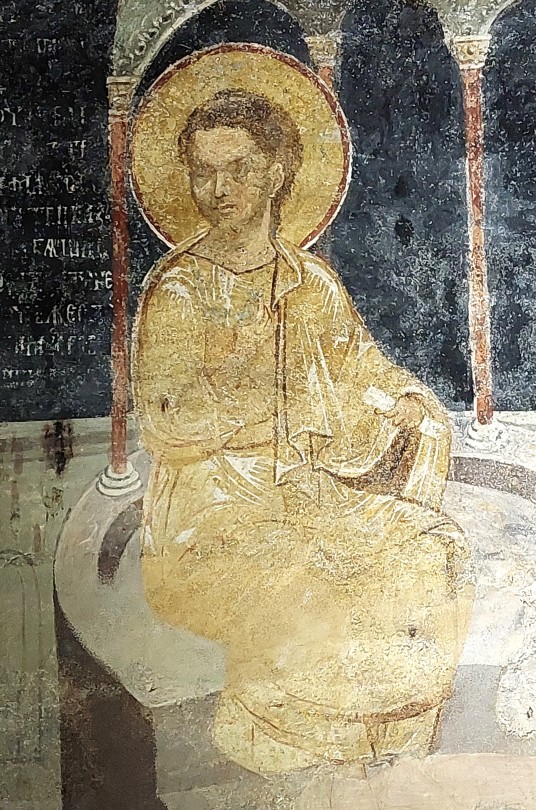
Der lächelnde Christus
Am Hügel der Schönen, Reichen und Korrupten, im Stadtteil Boyana am Fuße des Vitosha Gebirges steht ein äußerlich unscheinbares Gotteshaus, das es, im wahrsten Sinne des Wortes, in sich hat. Die vielfach erweiterte Kirchebeherbergt die wohl schönsten Fresken, die ich jemals zu Gesicht bekam. Inmitten eines exotischen Gartens steht die Trouvaille. Das Außergewöhnliche ist, dass die hier dargestellten Herrscher und Heiligen keineswegs idealisiert, sondern naturgetreu dargestellt sind. Selbst Jesus Christus trägt die Züge eines anmutigen Teenagers. Ich hätte nicht gedacht, dass ich Gottes Sohn je so ansichtig werde. Seine Gestalt ist schlank, in der Linken hält er eine Schriftrolle, die Rechte greift sich ans Herz, der etwas weltfremde Blick ist fragend, zweifelnd – beinahe lächelnd. Allein des Ausdruckes auf dem Antlitz des Allergnädigsten wegen hat sich der Ausflug gelohnt.
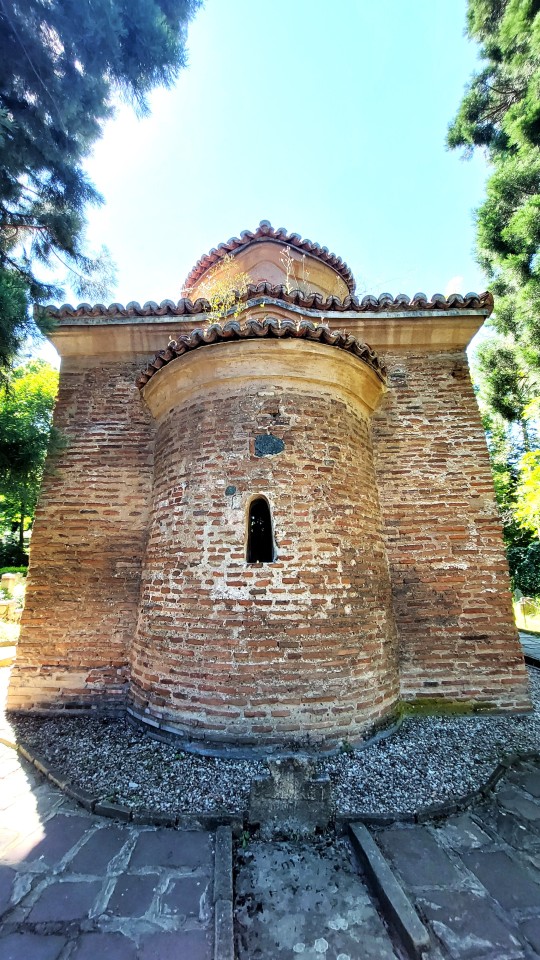
Boyana Kirche
Im Angesicht dessen vergesse ich jegliche frömmelnde Überlieferung, jedes gutgemeinte, allzu konservative Dogma. Hier ist ein Mensch abgebildet, wohl ahnend, welches Los ihm beschieden ist. Natürlich herrscht in dem winzigen Innenraum strengstes Foto-Verbot, das raunt mir mein (hier unerlässlicher) Guide ins Ohr. Ich nicke. Er fragt, ob er sonst noch etwas für mich tun könne. Ich nicke abermals, positioniere ihn mit beiden Händen so, dass sein massiger Körper die neugierigen Blicke des Kustos verdeckt, sodass ich blindwütig alles abfotografiere, dass mir gerade vor die Linse kommt. Einmaliges darf sich nicht der Begehr meiner Leserschaft entziehen, schon gar nicht der Anblick seiner Heiligkeit, Gott aller Christen, Juden und Protestanten, der Herr allen Lebens. Dann packe ich meine Siebensachen zusammen, verabschiede mich freundlich vom Museumswärter, puffe meinem Führer freundschaftlich in die Hüfte und verlasse schlechten Gewissens den heiligen Ort. Draußen im Garten überprüfe ich das Ergebnis meiner Raubkunst. Was ich sehe, treibt mir die Tränen der Rührung in die Augen. Ein etwa 17-Jähriger blickt mich an: fragend, zweifelnd – beinahe lächelnd.

Die bemalte Kirche
#michael schottenberg#schotti#schotti unterwegs#schotti to go#orf#studio 2#Bulgarien#Sofia#Kirchen#Orthodxe Kirche#Ikonen#Alexander Nevski#Kyrill#Method#Kyrill & Method#Zar Samuil#Byzantinisch#Boyana Kirche#Basilika Sveta Sophia
3 notes
·
View notes
Text
Portraits of Romanovs (and Relations) by Nicholas Panagiotti Zarokilli
Nicholas Pannagiottis Zarokilli was born in Turkey in 1879. He was a painter particularly fond of creating pictures of beautiful women. From 1912 to 1920, Zarokilli produced paintings for publications like MoToR, Modern Priscilla, Women’s Home Companion, The Green Book, McCall’s, and The Saturday Evening Post.
He also designed World War I posters. The United States needed money for the war, so the artist created posters to try and encourage people to give for the cause.
Zarokilli was known well for his dry-point paintings. Drypoint is a printmaking technique of the intaglio family, in which an image is incised into a plate or "matrix" with a hard-pointed "needle" of sharp metal or diamond point. In principle, the method is practically identical to engraving.
He painted portraits for people such as the Queen of Spain, the Archbishop of Canterbury, Grand Duchess Anastasia, the King of Portugal, and Mr. and Mrs. Solomon Guggenheim. Landscapes were also his love, painting the cities of Venice, Madrid, and Seville.
The following is his rendering of several members of the Romanov family (and other relations.) I have seen some of these here and there before (several of you have them in your Tumblrs and always admired them; I think he captures the likenesses admirably. I found the ones here together and identified on the British Museum website (they were done between 1920 and 1922.)
These are the names of the easily recognizable "personages" in the paintings in the order they appear below:
Prince Felix Yusupof (wearing a suit)
Prince Felix Yusupof (head)
Princess Irina Alexandrovna
Grand Duke Alexander Mikhailovich (sitting)
Grand Duke Alexander Mikhailovich (bust)
Prince Andrei Alexandrovich
Prince Feodor Alexandrovich
Grand Duchess Anastasia Mikhailovna
Grand Duke Kyril Vladimirovich
Grand Duchess Maria Pavlovna the Younger
Queen Marie of Romania (born Princess Marie Alexandra Victoria of Edinburgh) - Granddaughter of Queen Victoria
Queen Victoria Eugenie of Spain (born Princess Victoria Eugenie Julia Ena of Battenberg (youngest granddaughter of Queen Victoria, Hessian Princess through the morganatic Battenberg line)



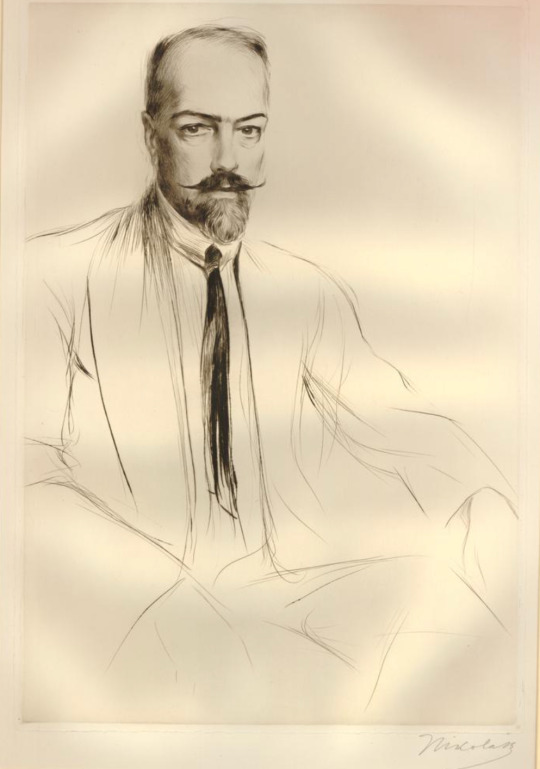
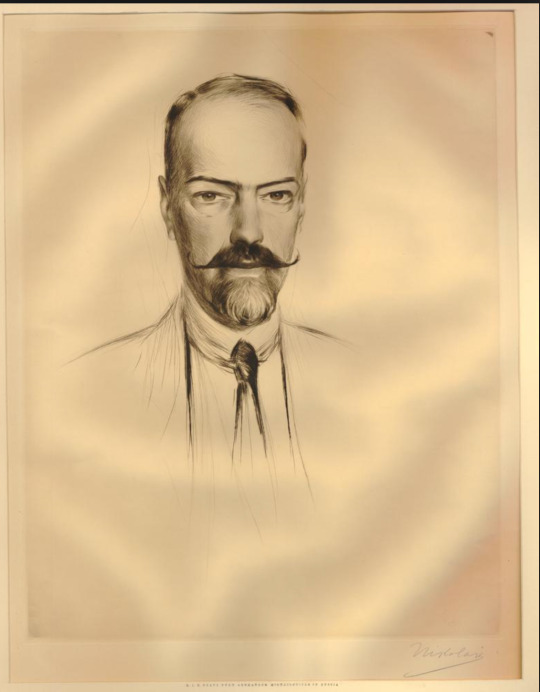

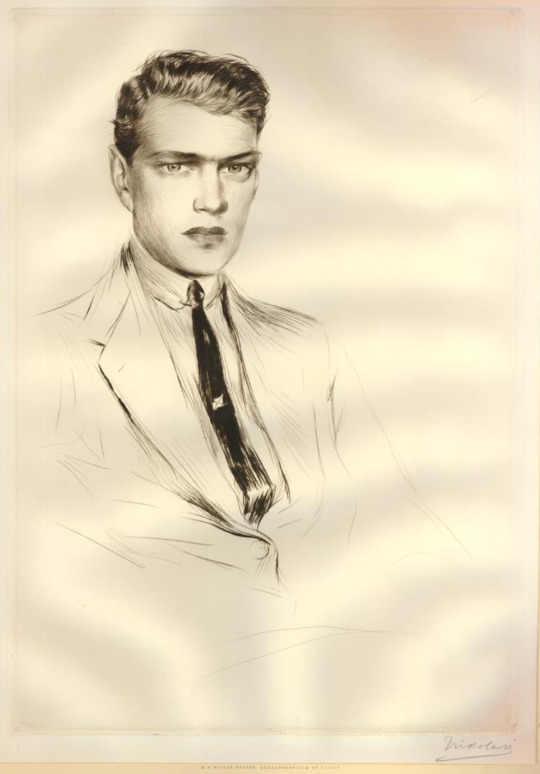


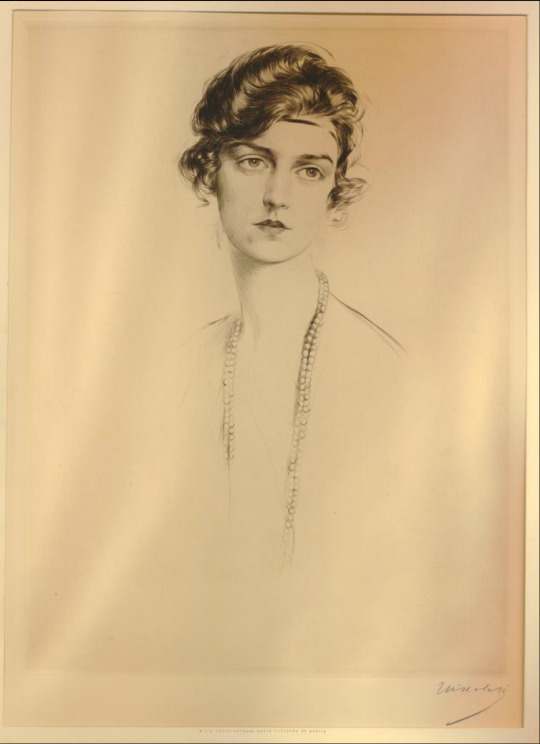

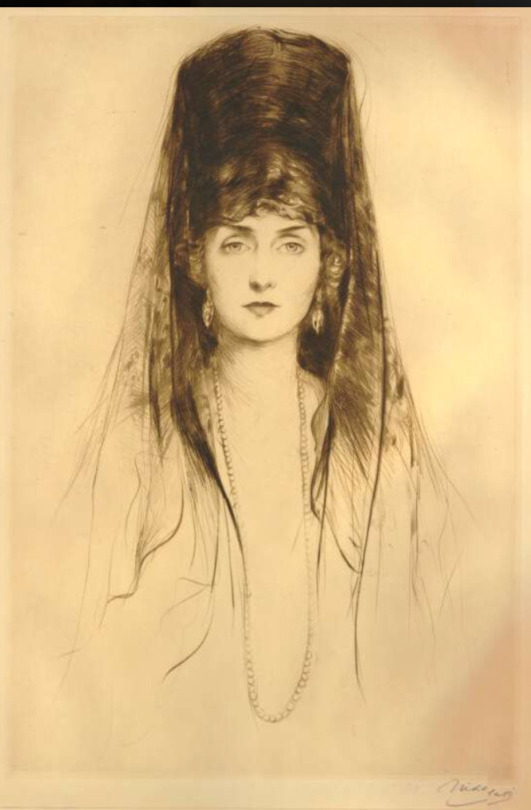
References
N.P. Zarokilli Archives | The Saturday Evening Post
Nicholas Panagiotti Zarokilli | British Museum
#Nicholas Panagiotti Zarokilli#Prince Felix Yusupov#Princess Irina Yusupov#Grand Duke Alexander Mikhailovich#Grand Duchess Anastasia Mikhailovna#Prince Andrei Alexandrovich#Prince Feodor Alexandrovich#Grand Duke Kyril Vladimirovich#Grand Duchess Maria Pavlovna the Younger#Queen Marie of Romania#Queen Victoria Eugenia of Spain#Romanov dynasty
36 notes
·
View notes
Text
Reviewing Star Trek TNG - S3E12 “The High Ground”

Sorry this review is a bit later than usual. It was hot as balls yesterday so I couldn't concentrate enough to write it.
Fun fact: Because of this episode's mention of a Irish Unification in 2024 as an example of terrorism succeeding, this episode was edited in the UK and banned in Northern Ireland, and wasn't broadcast in its uncut form until 2006. So that's fun.
It's not like they were unaware of what was going on in Northern Ireland at the time. The episode was specifically rewritten to reflect those conflicts, after all.
THE PREMISE
The Enterprise is sent on a mercy mission to deliver medical supplies to the war-torn non-affiliated planet Rutia IV in the middle of a decades-long conflict with a rebel separatist group called the Ansata. After a bomb goes off in a public plaza, Dr Crusher is abducted by the Ansatan leader, Kyril Finn (played by Richard Cox) to provide the Ansata with a doctor.
When denied the use of the Enterprise's superior firepower (they're unable to interfere due to the Prime Directive), head of security Alexana Devos (played by Kerrie Keane) orders severe interrogation of all known Ansata sympathisers, which the Enterprise crew find immoral. Meanwhile, they try to examine the Ansata's teleportation technology to determine the location of their secret base.
MY REVIEW
It's nice to have an episode focusing on a female character that's actually good for once.
First of all, Crusher's interactions with Finn thankfully does not lead to a romantic subplot. Instead they, y'know, actually further the plot and develop Finn as a character. For one thing, while he's no saint (he did just abduct a woman in the aftermath of a terror attack which he ordered), he still treats her (relatively) well, and sees no reason to harm her.

On the other hand, he views himself as a latter-day George Washington fighting for freedom and independence. Crusher counters with the fact that Washington was a military general and not a terrorist who killed innocent people. Finn then argues that the difference between a terrorist and a general is a matter of interpretation, and that the Federation has probably done its fair share of killing in the pursuit of peace. He will lay down his life if it sets them free, and there will be a revolution in this century.

Also, that's two reviews in a row with a Hamilton reference. I should cut back.
In the meantime, Crusher treats the injured (Ansata? Ansatans? What's the right word?) terrorists with the help of stolen Federation medical supplies and a random child, giving us this gem of a quote:
"You could learn to do this when you grow up... if you grow up."
My dude, the kid's right there.
Back on the Enterprise, they're having trouble trying to work out the location of the Ansatan base, but they have determined that they were using interdimensional travel to teleport (it's Star Trek, just go with it) and such a method can eventually prove fatal, hence the Ansata's need for a doctor.
Meanwhile (this episode jumps around a bit), Riker works with Devos to find a lead by arresting suspected Ansata sympathisers, including children, which Riker naturally takes issue with. Devos defends her methods as much less harsh than her predecessors', whose suspects would often never be heard from again.
It's here that we also get some helpful exposition: 70 years ago, the Rutian government denied the Ansata's request for independence (see where the Northern Ireland allegory comes in?), which the Ansata took as ample cause for armed conflict, and now just an excuse for armed violence. Devos also explains that she used to be less passionate about this until a terror attack on a school bus that killed 60 children, caused by a bomb that one of the children was carrying.
...Usually I'd have a joke or something after a line that. But an episode about terrorism doesn't really lend itself well to comedy.
Anyway, the main point of these scenes is to show that, while both are varying degrees of sympathetic, no approach is entirely in the right, including the Federation's continued attempts at diplomacy.
Back to plot stuff.

Riker gets one of the sympathisers to deliver a message to the Ansata that the Federation is willing to discuss terms for Dr Crusher's release. Unfortunately, Finn doesn't take this well, believing that this means the Federation has sided against them. He instead changes tactics to destroying the Enterprise to get the Federation's attention and force them to intervene. His methods are... highly questionable, but they're asking him to lead, and he's doing the best he can- okay, I'll stop. I promise.
Cut to a group of terrorists shifting onboard the Enterprise.

Their shifting technology allows them to bypass the transporter and forcefields, so they take out the security and engineering teams and attach a bomb to the main reactor. Fortunately, Geordi removes it and has it beamed out into space. Unfortunately, Finn shifts onto the bridge and kidnaps Picard.
Although he's glad to see that Dr Crusher is okay, the two of them soon clash, with Crusher's talks with Finn giving her doubts on the nature of the Federation's mission. Picard then thankfully reminds her that she is arguing for the man who moments ago almost killed her son.

Finn comes in and continues to explain his 4D chess strategy by saying that kidnapping a Starfleet captain will force the Federation to get the Rutians to agree to his demands if it means getting their personnel back. This guy's plans are kind of falling apart at this point.
Also, Wesley tracks the shift technology's source back to the Ansata base. That was a whole-ass subplot that I didn't really want to get into, but it's important to know, cuz it means that a Federation/Rutian rescue team heads over there.
Long story short, they attack the base, and Devos shoots Finn before he can kill Picard.

"As a prisoner he would have been a focus for violence as his followers tried to free him. Now, he's a martyr."
...You do know that martyrs tend to inspire their followers instead of discouraging them, right?
Then a boy listens to Dr Crusher and refrains from killing Devos, with Riker musing that the violence could stop if more people were willing to make that change.
Because the apparent lesson to learn from all of this is that... killing is bad... and we should stop doing it.

You almost had something there. You were really close to making an interesting point.
The episode ends with Dr Crusher reuniting with Wesley on the Enterprise bridge. Happy ending for all, as long as you ignore the ongoing terrorist conflict on the planet they're warping away from.
7/10 - Presents some interesting ideas, even if the execution is a bit muddled in places.
#star trek#star trek tng#star trek the next generation#star trek review#star trek tng review#captain picard#jean luc picard#uss enterprise#will riker#geordi la forge#wesley crusher#deanna troi#star trek worf#star trek data#beverly crusher#miles o'brien
8 notes
·
View notes
Text
Kloster Sveti Naum am Ohridsee in Nordmazedonien
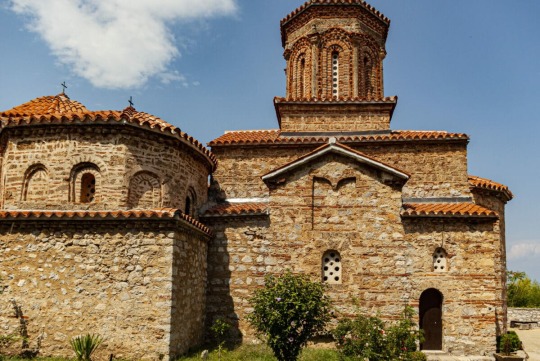
Das Kloster Sveti Naum ist ein historisches Kloster am Ohridsee in Nordmazedonien. Das Kloster befindet sich in der Nähe der Stadt Ohrid und ist eines der bekanntesten religiösen Stätten des Landes. Es wurde im Jahr 905 n.Chr. von dem heiligen Naum von Ohrid gegründet, einem der Schüler von Kyrill und Method, den heiligen Brüdern, die das kyrillische Alphabet entwickelt haben. Das Kloster ist ein wichtiges kulturelles und historisches Denkmal des Landes und gehört zum Weltkulturerbe der UNESCO.

Blick über den Ohridsee. Auf dem See fährt ein kleines Boot. Im Hintergrund befinden sich hohe Berge.

Eine kleines Ruderboot mit ca. 15 Leuten fährt über den unterirdischen Quellen des Ohridsee.
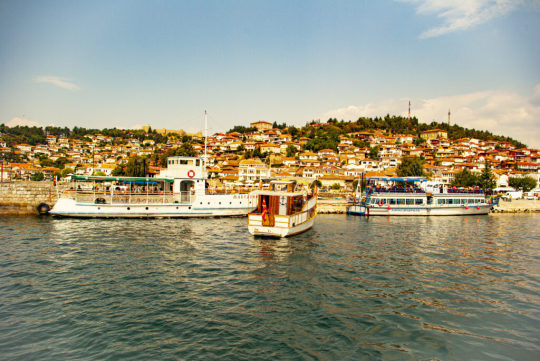
Der Hafen Ohrid vom Wasser aus betrachtet mit Ausflugsbooten. Im Hintergrund auf einem kleinen Hügel sieht man Samuels Festung.
Sveti Naum byzantinische Architektur
Das Kloster Sveti Naum ist nicht nur ein Ort der religiösen Verehrung, sondern auch ein wichtiger Ort für die Kultur und Geschichte des Landes. Es ist bekannt für seine byzantinische Architektur und seine gut erhaltenen Fresken, die aus dem 10. Jahrhundert stammen. Die Fresken zeigen biblische Szenen sowie Porträts von Heiligen und Aposteln.
TIPP
Nordmazedonien liegt im Herzen des Balkans und bietet atemberaubende Landschaften, geschichtsträchtige Orte und liebenswerte Menschen.
Ein besonderes Erlebnis ist ein Besuch im Kloster Sveti Naum. Mit einem Ausflugsboot gelangt man in einer guten Stunde von Ohrid - der größte Ort am gleichnamigen See mit ca. 40.000 Einwohnern - nach St. Naum. Dort gibt es so einiges zu entdecken.
Zum Beispiel unterirdischen Quellen, die den tiefsten See Südeuropas mit Wasser speisen, denn der See selbst hat keine nennenswerten Zuflüsse. Das Wasser gelangt unterirdisch aus dem 200 m höher und südöstlich vom Ohridsee gelegenen Prespasee hierher. Zwischen beiden Seen erstreckt sich der Galičica-Nationalpark mit dem 2.255 Meter hohem Magaro. Der Ausblick ist phantastisch.
ANZEIGE. Ohne geht es leider nicht.
Booking.comSeit 2013 buche ich meine Unterkünfte über booking.com und stelle mir meine Reisen zusammen. Merke mir Hotels die mir gut gefallen, um sie in spätere Reisen zu integrieren. Bereut habe ich das nie. Aber seht am besten selbst.Unterkunft suchen
Am Ufer des Ohridsees
Das Kloster ist von einer wunderschönen natürlichen Landschaft umgeben. Es liegt am Ufer des Ohridsees, einem der ältesten und tiefsten Seen Europas. Die Umgebung des Klosters ist von dichten Wäldern und steilen Bergen geprägt. Diese natürliche Schönheit macht das Kloster Sveti Naum zu einem beliebten Ziel für Touristen und Pilger.
Sieh dir diesen Beitrag auf Instagram an Ein Beitrag geteilt von zurück aus ... (@perviam__)
Rund um Sveti Naum
Neben seiner religiösen und kulturellen Bedeutung bietet das Kloster auch zahlreiche Freizeitmöglichkeiten. Besucher können Bootsfahrten auf dem See unternehmen, schwimmen oder angeln. Es gibt auch Wanderwege in den umliegenden Bergen, die atemberaubende Ausblicke auf den See und das Kloster bieten.
Booking.com
Das Kloster Sveti Naum ist ein wichtiger Teil der Geschichte und Kultur Nordmazedoniens. Es ist ein Ort der Ruhe und Besinnung, der Besucher aus der ganzen Welt anzieht. Seine gut erhaltene Architektur und Fresken sowie seine natürliche Umgebung machen es zu einem einzigartigen und unvergesslichen Erlebnis für alle Besucher.
Read the full article
1 note
·
View note
Text
Südosteuropa 2023
Ohrid - Štip

Von Ohrid aus geht die Reise heute weiter, und nachdem ich nun vom Kosovo kommend südwärts gefahren bin, interessiert mich natürlich, wie es im Landesinneren aussieht. Also mache ich früh zuerst einen kleinen Ausflug ins bekannte Kloster Sveti Naum, einst errichtet von Baum, einem Schüler der Slawenapostel Kyrill und Method , denen hier sehr oft Denkmale gewidmet sind. Sie gelten als die Erfinder der slawischen Schriftsprache, des glagolitische Alphabets, aus dem später dann das kyrillische Alphabet hervorging. Die ganze Gegend hier war ja ein sehr wichtiges Gebiet für das frühe Christentum, es finden sich viele Kirchen und Klöster.
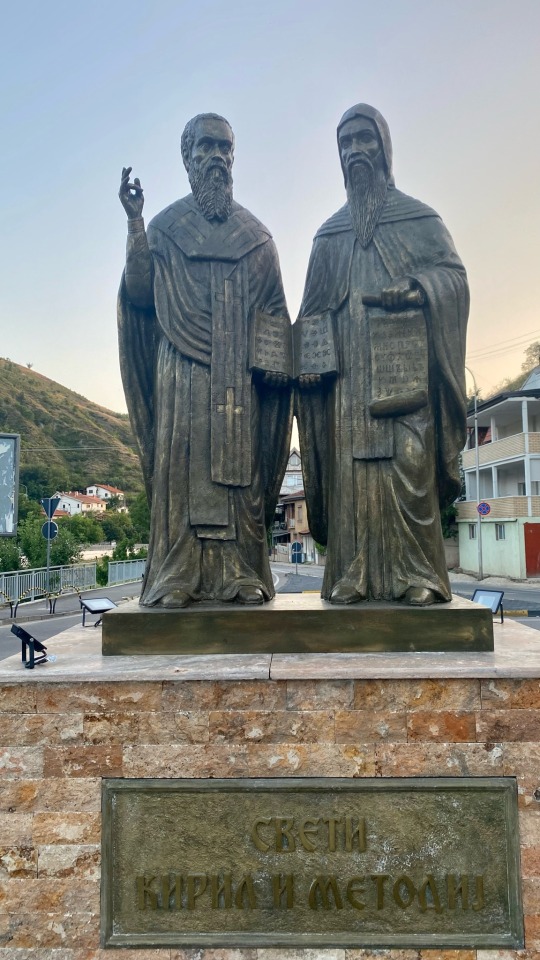
Das Kloster Naum ist eigentlich recht unspektakulär, aber der ganze Ort nahe der albanischen Grenze ist eine touristische Hochburg, da fließt auch ein Flüsschen in den See, und man kann Kahntouren machen zur Quelle, alles ist voller Buden und irgendwie ein riesiger Jahrmarkt. Nichts für mich.


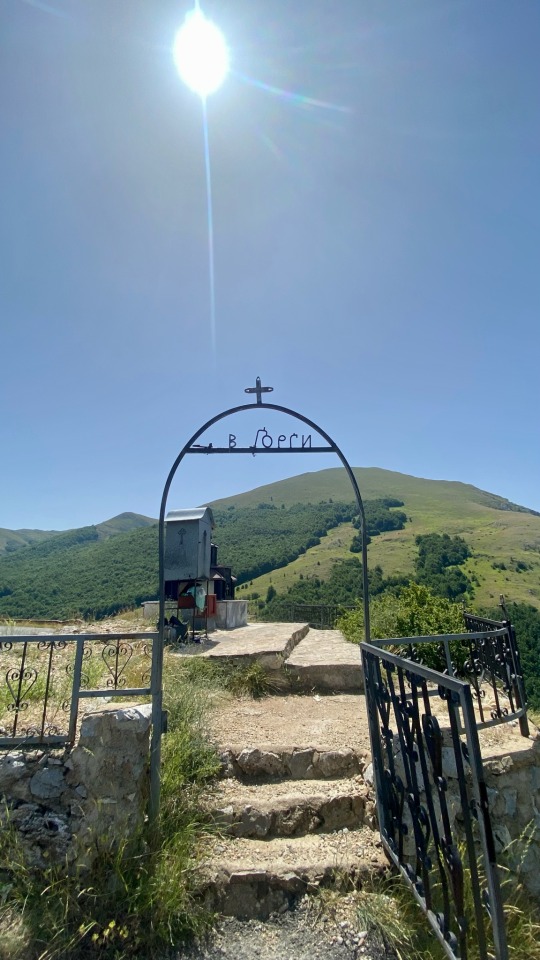
Die Straße schlängelt sich dann vom auf 643m Höhe gelegenen See auf 1600m hinauf, durch den mit einem kleinen Straßengeld von 80 Dinar, ca 1,30€ belegten Nationalpark Galičica, einem wunderschönen Gebirgszug, der auf beiden Seiten je einen großen See hat. Den Ohridsee auf der einen und den Prespasee auf der anderen. Von den Bergen stürzen sich todesmutig Paraglider in die Tiefe, eine Sportart, bei deren Ausübung man mich niemals sehen wird.

Im Anschluss an das Gebirge gelange ich in die schöne Stadt Bitola, die nicht nur mit einer überaus langen Geschichte sondern auch mit einer sehr ansehnlichen Innenstadt aufwarten kann. Jedenfalls auf einer Straße, die sich durch die Innenstadt zieht. Schöne alte Häuser beherbergen kleine Cafes, Boutiquen und Galerien , eine Studentenstadt ist Bitola ebenfalls, und insgesamt macht sie einen erfrischenden Eindruck. Wenn man von den 38 Grad Celsius absieht.


Überhaupt sind die Städtchen und Dörfer hier auf der Strecke recht gut anzuschauen. Nicht schön, aber irgendwie doch spannend, es sieht vieles aus wie in den 70ern gebaut, alter jugoslawischer Charme, was man eben so baute damals.

Ich durchquere im Laufe des Tages auch noch andere Gebirge, und zwischendrin ist Nordmazedoniens Weinbaugebiet zu hause, wo man doch recht passable Tropfen herzustellen weiß. Da mich diese aber während dieser Reise nicht interessieren, lasse ich die Weinkeller links liegen und beende den Tag in der kleinen Stadt Štip, wo ich für 10 Euro ein passables Zimmer anmiete. Im Studentenheim der örtlichen Uni, da vermietet man während der Abwesenheit der Studierenden die Quartiere. Ein Vierbettzimmer für mich allein. Die Stadt selbst hat außer dem schon benannten Jugocharme nicht viel mehr zu bieten, es gibt keine antiken Attraktionen, außer ein paar Kirchen, aber die Menschen sind freundlich und das genügt mir. Und die Preise für alles liegen ungefähr bei der Hälfte der Preise in den Touristengebieten. Nicht überraschend. Cappuccino 0.90€, ein Kilo Aprikosen 1.10€, eine Pizza 4.00€…

1 note
·
View note
Photo

Le foto #natalizie devo ancora caricarle - quando mia moglie si sveglierà - , intanto questa... Bis meine Frau wach wird und ich Weihnachtliches hochladen kann, erst mal dies! #metodio #cirillo #method #kyrill #compatroni d' #europa #Patrone #Europas https://www.instagram.com/p/CJNlTOxFMMo/?igshid=18ljy2tgfp85c
0 notes
Text

MC HOUSE CHALLENGE || Alexia Lockhart
Starting the new year with @kyril-hphm's challenge! I'm still working on sharing more of Alexia, so I guess this is a good start. ヾ(*・ω・)ノ
✦ ✦ ✦
❤️ Gryffindor!Alexia:
A bouncing ball of energy and the most adventurous and open out of the four. She likes keeping her hair short so that she won't spend extra time on it. Impulsive to a fault, she ends up on getting into a lot of unwanted situations. More daring and stubborn than Slytherin!Alexia, she trained and trained until she got to be in the Gryffindor Quidditch Team, which very much made her mum a bit worried but very proud nonetheless.
💛 Hufflepuff!Alexia:
Very affectionate like Slytherin!Alexia. She's a sweet cinnamon roll who likes helping people and is usually seen with a warm smile on her face. Just... don't get on her bad side. She's also the most patient among the four and usually takes her time on most things. With easy access to the kitchens, she gets to learn more about cooking with the help of her fellow Hufflepuffs. Also, her love for flowers is more apparent and is often attempting to conjure different flowers each day to decorate the Hufflepuff Common Room.
💙 Ravenclaw!Alexia:
More mild-mannered and introspective than Slytherin!Alexia. She comes across as distant to most of her peers because of her usual nonchalant and straightforward behavior, which comes in handy as she can avoid as much conflict as possible. However, she also does her best to be more expressive especially for her friends. While she values the arts more than academics, she's also very studious and often stays late at night reviewing lessons so she can retain them better. Her thirst for knowledge doesn't really stop and likes learning a wide variety of topics through different methods.
💚 Slytherin!Alexia:
The OG! She pretty much shares a lot qualities with the three. Alexia is cheerful and a little bit mischievous but it usually goes unnoticed because of her cool and calm demeanor. She's a very observant and curious individual, qualities which compliments well with her ambition and resourcefulness (like honing different skills) as well as her relationships with others. Fiercely loyal and affectionate to whom she holds dear, she gives them her all out support and will be there whenever she needs them. Despite all this, she doesn't really open up that easily when it comes to her misgivings as to not worry other people.
✦ ✦ ✦
And that is all! Feel free to do this challenge, it's pretty fun~
#mc house challenge#hogwarts mystery#hphm art#jacob's sibling#alexia lockhart#my art#dang all my brainworms popped up during the midnight mass yesterday and now i can't put them into words (。•́︿•̀。)#tag game#alexia house au#featured
24 notes
·
View notes
Photo
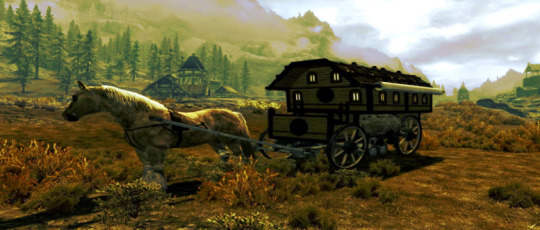
Lausitzer Geschichte: Welchen Einfluss hatten die byzantinischen Missionare Kyrill und Method auf die Lausitz?
0 notes
Text
Die Slowakei freut sich auf Papst Franziskus
Erzbischof Zvolensky, Vorsitzender der Slowakischen Bischofskonferenz, hat erfreut auf die Ankündigung der Papstvisite diesen September reagiert. Er sieht den Papstbesuch auch als Würdigung der Slawenapostel Kyrill und Method. https://ift.tt/3AsnUKX
0 notes
Link
Papstbesuch aufgrund der Slawenapostel Kyrill und Method
vaticannews.va/de/papst/news/…
0 notes
Text
Episode Reviews - Star Trek: The Next Generation Season 3 (3 of 6)
Carrying on with my reviews of Star Trek: The Next Generation episodes, here’s another round that brings us to about the mid-point of the third season
Episode 11: The Hunted
Plot (as adapted from Wikipedia):
The Enterprise is investigating the planet Angosia III as a candidate for entry into the Federation. Captain Picard is discussing this with Prime Minister Nayrok when a convict escapes on a transport ship from the Angosian prison colony on Lunar V. Picard offers his assistance and The Enterprise locates the ship, which flies behind an asteroid. However, only the drive section emerges from the other side with no life signs. Following it around they find the ship's wreckage. Believing that the prisoner has perished, the ship returns to the planet, only to discover the drive section they saw has disappeared.
Picard and Commander Riker return to the Enterprise and following a hunch from Data locate an escape pod and beam aboard the prisoner. When security try to take the prisoner into custody he fights back, virtually unaffected by their phasers. He overpowers the guards and injures O'Brien before he is subdued by Lt Worf and Riker. Upon further examination the crew find that the prisoner does not emit any life signs on scanner.
The prisoner identifies himself as Roga Danar a former soldier. Counsellor Troi meets Danar and reads little aggression from him, finding it unlikely that he could be so violent. Danar explains that he and others were genetically enhanced and mentally programmed, greatly increasing their abilities and affecting their responses when in danger. The crew also finds that despite being a prisoner Danar has no criminal record. Nayrok confirms Danar's story but says that the soldiers were unsuited for life in civilized society. When Captain Picard raises the subject with Nayrok, he refuses to discuss the abuses Danar alleges, considering it a matter of internal security, and instead simply arranges for Danar to be returned to the colony. Danar tells Troi that the conditioning was never reversed or treated, and due to its effects, a small misunderstanding could often lead to murder. Rather than try to fix the conditioning, the government imprisoned them all.
During the transfer from the Enterprise to the Angosian transport, Danar manages to escape. Easily evading security, he cripples the Enterprise by causing an explosion in one of the Jeffries tubes, disabling the sensors. With the Enterprise blind Danar beams aboard the Angosian transport vessel. Taking control, he attacks the Lunar V colony and rescues several of his fellow inmates.
Danar and the other inmates lead an attack on the capital and confront the Angosian government. Nayrok pleads with the Enterprise to help. Picard beams down with an away team but refuses to help, questioning the morality of how they've treated their soldiers. Nayrok and his compatriots explain the government's view on the matter; that they weren’t sure the soldiers' augmentations could be reversed, thus requiring them to be confined for their own good and perhaps used again in the future. Against this, Picard is frustrated at their intransigence on this matter.
In the middle of this argument, Danar and his rebels storm the government building. In an act of hypocrisy, Nayrok pleads with Picard to intervene against this insurrection. Picard elects instead to depart considering he has sufficient information for his report, including the flagrant sentient rights abuses discovered, reminding Nayrok that he himself called the matter an internal affair.
With Nayrok fruitlessly protesting against their being abandoned, Picard informs the government that they have to make a choice on what to do with their veterans. Danar smiles at the away team, happy to finally be recognized as they depart. On their return to the Enterprise, Picard notes that if the government survives, they will be given assistance in helping their veterans with their conditioning. He also notes that they may reapply to join the Federation at a later date.
Review:
This episode is strictly oriented with no focus on any single character from the main cast. Apparently, the underlying theme of the episode was to show a metaphorical reflection and exploration of how veterans of America’s war in Vietnam were treated, and by extension remains a metaphor for how modern militaries in western society treat their veterans. The psychological component of the episode’s sci-fi elements, in turn, is also a potential metaphor for PTSD, albeit not necessarily the most positive one given the actions of Danar under his own form of conditioning.
More worrying, however, is that a lot of people preferred an earlier draft of the finale in which the altered Angosian soldiers would have had a massive shoot out ending in a wipeout of all the guest characters. Frankly, I think that would have been a terrible idea, because then depending on how that was played out, you’re essentially suggesting anyone whose mental health has been adversely affected by war is doomed to some kind of mutual destruction ending on their life. The revised ending is far more positive, because it suggests even the most ignorant of societies can learn to treat combat-induced mental trauma, and indeed mental ill health as a whole, the right way. That kind of hopeful message is what Star Trek is ultimately supposed to be about, even if at this period in the franchise it occasionally lent too far towards its utopian ideals.
Overall, I think this is a pretty decent episode, made even more so thanks to James Cromwell making his first of many guest appearances within the Star Trek franchise. Of course, his most notable one is yet to come within my TNG review (*Cough* First Contact). On the whole, I give this episode about 8 out of 10. Could have been full marks, but somehow I don’t think it’s quite at the upper-most levels of Trek.
Episode 12: The High Ground
Plot (as adapted from Wikipedia):
The crew of the Enterprise is sent on a mercy mission to deliver medical supplies to the war-torn non-affiliated planet Rutia IV, in the middle of a decades-long conflict with rebel separatists called the Ansata. The Enterprise crew cannot intervene in the conflict itself, internal to the planet, because to do so would violate the Prime Directive. While Chief Medical Officer Dr Crusher, Lt. Commander Data, and Lieutenant Worf relax in a cafe, a bomb goes off in a public plaza, injuring many bystanders. Dr Crusher attempts to tend to the wounded bodies against Captain Picard's suggestion to return to the ship, but her efforts are interrupted when she is abducted by a man using an unknown method of teleportation. After being denied the use of the Enterprise's superior firepower to seek and destroy the Ansata's base of operations, Alexana Devos, the head of Rutian security, orders severe interrogation of all known Ansata sympathizers, an act that the Enterprise crew find immoral. Without new information from Devos, the Enterprise crew investigate the teleportation technology and find that it is used to shift between dimensions, allowing the Ansata rebels to bypass even force fields. The investigative team, which includes Wesley, lets Picard know that they need to observe more of the teleportations to be able to pinpoint the location of the base.
At the Ansata base, Dr Crusher learns her abductor is Kyril Finn, the leader of Ansata. She refuses to eat or otherwise cooperate with Finn. After several hours, Finn lets Dr Crusher out of her restraints and requests that she help treat their wounded. She discovers that the "Inverters", the Ansata teleportation technology, cause irreversible damage to the user's DNA, and that many of the Ansata are sick due to excessive use of the Inverter. Finn admits that the Inverter is their only advantage against the Rutian government. After more hours pass, Finn believes that the Federation, by providing medical aid and working with Rutian security forces to find the doctor, is working with the Rutian government and launches an attack on the Enterprise, despite Crusher's requests to avoid harming her son. The Ansata manage to plant a bomb on the Enterprise warp engine. It is quickly transported into space by La Forge, but the distraction is enough to allow Finn to appear on the bridge. When Captain Picard jumps on Finn to save the bridge crew, he ends up being abducted. With Picard as his captive, Finn uses the Inverter to come to Counsellor Troi on the Enterprise and demand the Federation become involved in mediating the dispute, returning to the planet before security can arrive. Picard, learning of Dr Crusher's situation, tells her to continue to work on gaining Finn's confidence to hopefully end the dispute peacefully.
Data and Wesley are able to use Finn's appearance to locate the Ansata base, and Commander Riker and Devos assemble their forces. After they transport into the base, the combined forces are quickly able to quell the resistance. Finn, as a last resort, attempts to execute Picard, but Devos kills him. It is her conclusion that if Finn remained alive, his imprisonment would spark more resistance, while being killed in battle will only elevate him to martyr status and reduce the violence in the short-term. When a young Ansata member attempts to exact revenge on Picard, Dr Crusher is able to convince him to drop his weapon, which Riker notes is a sign that there may be more fruitful discussions to resolve the issue in the future.
Review:
According to the Trek wiki-page Memory Alpha, a lot of people on the TNG crew felt that this was a flop episode, somehow being a mishandling of an episode that was done primarily to satisfy a demand for more action-oriented stories. Apparently, it was originally intended as a metaphor on the American revolution, but then became compared to the Troubles of Northern Ireland. Indeed, at one point Data mentions a Reunification of Ireland in 2024 resulting from terrorism, and as a result the episode has never aired on TV stations based in the Republic of Ireland, while the show was shown only in an edited format on British television until May 2006 on Sky One (September 2007 for the after-midnight repeats on BBC 2).
However, I disagree with the opinion of the show’s crew. This was a good episode precisely because it did issue exploration, because issue exploration is what Trek often does brilliantly. Moreover, I like how Finn points out the difference between being seen as a revolutionary or a terrorist is sometimes more about the perspective of those in power after the conflict is over and a winner, or loser, is declared. He says this while discussing George Washington, and it’s a very apt analogy. Had George Washington lost the American revolution, he’d have gone down in history as being akin to Guy Fawkes in many minds. Instead, he won and gained a notable place in history as the founder of the United States.
Also, the idea that terrorism would just be limited to how we view certain revolutions, or that Ireland was the only possible comparison for this episode at the time this series was made, is also wrong. As we’ve come to learn the hard way in the 21st century, terrorism is also the tool of the religious extreme, and that applies to all religions, because no faith has cornered the proverbial market when it comes to terrorist acts. However, back then in the early 1990’s, Ireland would hardly have been the only country experiencing terrorism. Ever since its creation, the Jewish state of Israel has been subject to acts of violence from the displaced Palestinian population, which Israel routinely portrays as terrorism despite the fact that Israel invariably has the Palestinian people out-manned, out-gunned and heavily oppressed, as if subjecting them to what the Jews suffered for centuries some excuses their actions. Haven forbid it would enter either side’s head that maybe, just maybe, it would be better to share the land in peace and just agree to disagree on the whole mythical sky-figure issue.
This is why this episode is actually far better than the show-makers seem to think; because it does what Trek does best and, rather sadly given the subject matter, retains its relevance on repeat viewings. Its only flaw to my mind is that we get another bit of entertainment where people might think there’s a bit of Stockholm Syndrome going on when there isn’t. I’m no expert, but Beverly isn’t held captive long enough or subjected to any kind of ill-treatment that would make me buy into Picard’s warning about her ‘warming up to her captor’, just like I can’t buy into that same kind of concept in Beauty and the Beast for the same reason. Make it at least a week or two and I’d buy it, but only a matter of hours in both cases? Sorry, no chance, or at least not without some mind-altering substances and skilful manipulation of the captive’s psyche, none of which applies. Overall, I give this episode 8 out of 10.
Episode 13: Deja Q
Plot (as adapted from Wikipedia):
The Enterprise arrives at planet Bre'el IV to prevent the looming disaster of the planet's asteroidal moon falling from its orbit and crashing into the highly populated planet; as the ship arrives, the planet is already experiencing damaging effects of the moon's gravitational field. As the crew is working, Q appears on the bridge naked. Q explains that he is being punished by the Continuum for spreading chaos throughout the universe and he has been stripped of all his powers, banished from the Q Continuum, and transported to the Enterprise as a human, asking asylum. Captain Picard reluctantly helps Q, but instead of assigning him guest quarters, Picard treats Q like a criminal and throws him in the brig.
As the moon continues to descend to the planet, Picard urges Q to use his powers and move the moon back into its original orbit. Q still insists that he is powerless except for his IQ of 2005. The captain assigns Lt. Commander Data to watch Q and he is ordered to assist the Engineering team. Q suggests that they "change the gravitational constant of the universe." Q begins experiencing more human conditions, such as back spasms and hunger. Data takes Q to the Ten-Forward Lounge. When Q enquires about what food is best to address his constant suffering, Data suggests a chocolate sundae as he has observed Counsellor Troi turning to chocolate when depressed. After ordering ten sundaes, his hunger is quickly displaced upon encountering Guinan, who takes advantage of Q's mortal form to stab him with a fork. Shortly thereafter, Q is set upon by a cloud of gaseous entities called the Calamarain, who, having previously been tormented by Q, are attempting to get revenge. After raising the shields to prevent the Calamarain from attacking Q, Picard determines that Q took refuge on the Enterprise to protect himself from alien species that hold grudges against him.
Q's idea of changing the gravitational constant of the universe, impossible with human technology, sparks an idea in Chief Engineer La Forge to modify the gravitational constant of the moon using a warp field, and they attempt to use this. However, during the attempt the Enterprise's shields go down, allowing the Calamarain to attack Q again. Data attempts to save Q from their assault but is electrified in doing so, nearly frying his positronic brain. Realizing that his presence on the Enterprise is doing more harm than he expected, Q leaves the ship in a shuttlecraft. As the Calamarain close onto the shuttle, a second Q being appears on the shuttle and informs Q that due to his selfless act to protect the Enterprise, the Continuum is willing to give him a second chance and restore his powers. Q accepts, shrinking the Calamarain entities and teleporting them into the palm of his hand, gloating over the restoration of his powers. The other Q reminds him that he should reflect upon the lessons he's learned, and he grudgingly turns the tiny aliens loose. Q, dressed as a mariachi, returns to the Enterprise and celebrates. Nudged by Picard to leave, he departs, bestowing a parting gift on Data for showing Q how to be more human. After Q disappears, Data begins to laugh uncontrollably for a moment, to the surprise of the rest of the Enterprise crew. Upon learning that the Bre'el moon has returned to a safe orbit, Picard surmises that Q is responsible, and says that perhaps Q has a residue of humanity after all, but a cigar appears in Picard's hand with Q's voice telling him, "Don't bet on it."
Review:
Q is back, and speaking as a Marvel fan, it’s very much a case of Loki playing at being Thor. So far, Q’s been a trickster of sorts, using his powers to amuse himself, test humanity or both. This time, however, he gets stripped of his powers, dumped on the Enterprise and can’t get his powers back until he shows humility and selflessness. This is something that was baked into Thor’s comic incarnation of decades before this episode, so whether the Trek people realise it or not, Marvel beat them to the punch, and I’m sure other writers have covered the same kind of story before Marvel as well. Ultimately, it’s a fun episode as Q episodes ultimately became, but not by any means a highly original one. For me, the best part of the episode is Q giving Data the gift of laughter. Overall, I give this episode 7 out of 10.
Episode 14: A Matter of Perspective
Plot (as adapted from Wikipedia):
With a routine planetary survey ahead, the Enterprise drops Commander Riker and Chief Engineer La Forge at the Botanica Four research space station orbiting Tanuga Four to check on the progress of the work of Dr Nel Apgar, a Tanugan who has been working on Krieger waves, a new promised energy source for the Federation. When the Enterprise returns, Captain Picard is told that Riker stayed behind to have a private meeting with Apgar, and moments after Riker transports back to the ship, the station explodes, killing Apgar, and almost killing Riker due to the explosion disrupting the transporter process. Tanugan investigator Krag comes aboard to accuse Riker of murder; under Tanugan law, Riker is guilty until proven innocent, and Krag demands Riker's extradition. Captain Picard requests that they hold a hearing aboard the Enterprise to determine Riker's guilt. This involves the use of a holodeck, recreating the events on the station from data logs and testimony from Riker, Dr. Apgar's wife Manua, and his research assistant, Tayna.
In the holodeck recreation, Krag demonstrates that a directed energy beam from Riker's location prior to transport struck the Krieger wave converter, destroying it and the station, but his theory is that Riker fired a phaser just before beaming out. Riker presents his case first, with his simulation showing Apgar highly agitated with a Federation presence before he is ready for them, and Manua openly flirting with Riker. Manua then makes aggressive passes at Riker in the guest quarters when Apgar walks in on them, attempts to attack Riker, but Riker subdues him. Apgar leaves with Manua giving Riker a veiled threat. Riker's simulation concludes with his final confrontation where Apgar tells Riker that he will lodge a formal complaint about Riker's behaviour and accuses Riker of potentially damaging the project with baseless information in Riker's progress report.
In Manua's version of the events, she is a doting wife, with her husband promising rich rewards coming from the project. From her point of view, Riker is the one making the advances, and when they are alone in the guest quarters, Riker threatens to rape her when her husband storms in to defend her, but Riker overpowers him and threatens to have the project shut down. During a recess, Riker asserts to Counsellor Troi that he never seduced or tried to rape Manua, and Troi believes him, but she tells him that Manua believes the events happened as described, and that "it is the truth as each of you remembers it".
Tayna's testimony is her version of events from Apgar's point of view as he told her. Picard tries to have the testimony dismissed as hearsay, however, Tanugan law allows such testimony, so they proceed. In her simulation, when Apgar walks in on Riker and Manua, Apgar is the one to successfully subdue Riker, leaving Riker threatening to kill Apgar. Based on the testimonies presented, Picard is not sure Riker's case is strong enough to avoid extradition.
Meanwhile, the crew of the Enterprise find highly focused pulses of an unknown, intense radiation striking parts of the ship, putting holes through the bulkheads. La Forge fears what would happen if this should occur inside the warp reactor. The initial assessment is that the only commonality is the timing of these events, which upon further examination they soon trace to be precisely in time with the lambda field generator on the surface, which had remained operating after the station's destruction. Picard comes to realize the truth, and prepares a new simulation on the holodeck.
With Krag, Manua, Tayna, and Riker all present, Picard demonstrates through a combination of the testimonies that Apgar was more interested in the potential financial success of completing the Krieger wave converter; he would not get this through the Federation, and Picard postulates that he in fact was trying to weaponize the project to make money, thus explaining his hostility towards Riker's presence. Further, Picard suggests that Apgar had successfully built the converter; the holodeck simulation of it, also being fully functional, has been focusing the energy from the generator on the planet, resulting in the damaging radiation experienced on the ship, which La Forge identified as Krieger waves. Picard completes his explanation by running the holodeck simulation of the moment of Riker's transport, synchronized with the planetary generator – the holodeck simulation shows that Apgar had aimed the Krieger wave generator at Riker, but when the energy beam struck him, the beam bounced off the transporter field and hit the converter, destroying it and the station. Krag agrees with the conclusion that Apgar accidentally killed himself and Riker is exonerated.
Review:
This is basically a Riker episode, and here we get a kind of spin on his customary ‘girl of the week’ escapades. This time, he’s accused of murder in a society where suspects are guilty until proven innocence, as opposed to the innocent until proven guilty stance of western society that Trek juris prudence is based on. In addition, the bulk of the evidence for Riker’s guilt is testimony that varies massively from Riker’s own recounting of events, and with little physical evidence to prove what happens until the end.
Because of all this, the episode makes several good points. First and foremost is a point that is later made throughout the entire CSI franchise, which is that scientific evidence is ultimately superior to witness testimony, as the testimony is biased by each character’s individual perceptions and the fundamentally unreliable nature of biological memory. In addition, as Greg Sanders points out in one episode of the tenth season of the Vegas CSI show, witnesses tend to merge what they see with prior assumptions. This is probably most evident with the last of the trio of witness testimonies, as Tayna’s deposition is probably affected by her admiration for Dr Apgar as much as any spin Apgar himself might have put on whatever he told her.
Secondly, the show tries to point out the error in taking a guilty until proven innocent stance. Had Picard allowed extradition of Riker without performing the holodeck recreations, Riker’s innocence in the murder charge would never have been proven, and the character could have potentially been imprisoned or killed for a crime he didn’t commit. This is why our system of justice has to assume innocence as the default state and prove guilt rather than vice versa; it is there specifically to protect the innocent from wrongful conviction.
Sadly, the episode falls short on two major points. First, there is too much variance between the three testimonies regarding the Riker-Manua relationship and Apgar’s actions with Riker in the guest quarters for me to believe Troi when she says everyone’s saying what they believe is the truth. Riker’s version portrays Manua as an unfaithful wife and he’s trying to be the consummate gentleman, Manua’s version suggests she is a doting wife and Riker a would-be rapist (which we’ve had two-and-a-half seasons to know is a flat-out lie in his case), and Tayna’s version suggests Riker and Manua were both into hooking up behind Apgar’s back. Likewise, Riker’s version of Apgar bursting in suggests Riker acted purely defensively, Manua’s version suggests Riker went for Apgar first, while Tayna’s version shows Apgar as someone who makes a successful physical defence of himself. That’s way too much difference for me to believe it’s just a ‘matter of perspective’. The show makers needed to get the three stories to coincide better.
Second, there’s no follow-up regarding Riker’s possible act of rape; as much as we know Riker would never commit such an act, it seems both strange and wrong to have the show essentially ignore that aspect of the charges against Riker. Much like the season 2 opener the child, it shows how blind we were back then regarding what we now term rape culture. In summation, I give this episode 6 out of 10.
Episode 15: Yesterday’s Enterprise
Plot (as adapted from Wikipedia):
The USS Enterprise (NCC-1701-D) encounters a rift in spacetime while on a routine mission. As they monitor the anomaly, the heavily damaged USS Enterprise-C, a ship believed to have been destroyed more than two decades earlier, emerges. Instantly, the Enterprise-D undergoes a sudden and radical change from its current timeline: it is now a warship, and the United Federation of Planets is at war with the Klingons. Neither Worf nor Counsellor Troi are seen or referred to, and Tasha Yar, who was killed years before, is now alive and running the tactical station. None of the crew notice the change, but Guinan senses that reality has shifted, and has a meeting with Captain Picard to discuss her concerns. She senses that there are supposed to be children on the ship, which of course is completely impractical on a warship. She suggests that the Enterprise-C does not belong in their time and must return to the past. Picard, who knows that this would be a suicide mission, refuses to give such an order based on Guinan's intuition alone.
Captain Rachel Garrett of the Enterprise-C and her crew learn they have travelled into the future. Garrett explains that they were responding to a distress call from the Klingon outpost on Narendra III, and were attacked by Romulan starships. While his crew works to repair the Enterprise-C and tend to the crew's injuries, Picard and his command staff discuss whether or not the ship should return to the past. Commander Riker argues that their deaths would be meaningless, but Data suggests that it would be considered an honourable act by the Klingons. Picard discusses the situation with Garrett, who tells him that her crew will serve the Federation in the present. Picard quietly reveals to her that the Federation is on the verge of defeat and the presence of one ship will make no difference, but if the Enterprise-C were to return to the past they might prevent the war from ever starting. Garrett agrees and announces to her crew that they will return through the anomaly; at that moment, the two ships are ambushed by a Klingon Bird of Prey. Garrett is killed, and her helmsman, Richard Castillo, takes command.
During the repair efforts, Yar becomes close to Castillo, but is unnerved by tense interactions with Guinan. Guinan reveals to Yar that she knows Yar dies a meaningless death in the other timeline, and that the two should never have met. Based on her discussion with Guinan, Yar requests a transfer to the Enterprise-C, which is granted by Picard. As the Enterprise-C prepares to return through the anomaly, three Klingon battlecruisers attack. With the anomaly becoming unstable, Picard orders the Enterprise-D to cover the Enterprise-C's withdrawal. The Enterprise-D suffers massive systems damage and major crew losses under the Klingon barrage, including the death of Commander Riker, forcing Picard to man the tactical station himself. With the Enterprise-D on the brink of destruction, the Enterprise-C traverses the anomaly, triggering the return of Enterprise-D's original timeline. In the restored timeline, Guinan – the only one subtly aware of what has transpired – asks Geordi La Forge to tell her more about Yar.
Review:
Somehow, despite a lack of underlying issue exploration, character development or anything else that typically make great Trek, this episode has gone down in history as one of the pinnacle episodes of the franchise generally and TNG in particular. To be fair, it is fairly unique on two points. First, it is TNG’s first episode to make any really effective use of time travel, and it’s a rare example of the time travel being people coming forward from the past and having to go back there, whereas most time travel involves heading back to the past and returning to the future. Second, it brings back Denise Crosby as Tasha Yar…just to kill her off again.
The real stand-out point of this episode is that after almost two seasons worth of episodes between this one and ‘Skin of Evil’, TNG basically brought back a killed off main cast character to try and re-do that death better. Now knowing the legacy of this episode later in the TNG series, I can honestly say they could have done better. Really, this episode shouldn’t have had a legacy just to preserve the more purposeful death for Tasha that this episode tries to provide. Moreover, this episode fails to impose any kind of consistency on past-to-future time travel, as a much later episode would involve the same kind of time travel without history-altering interruptions, and I’ll discuss that more when that episode comes up. For now, however, I’m content to say that I’m not about to give this episode quite the same level of praise that others seem to have afforded it. Instead, I give it about 7 out of 10.
0 notes
Link
Dass Sprachen aussterben, war mir bewusst. Über den Tod von Schriften habe ich mir bisher weniger Gedanken gemacht. Der Artikel vermittelt einiges an Wissen.
Die Brüder Abdoulaye und Ibrahima Barry erinnern ein wenig an Kyrill und Method.:)
0 notes
Text
Dr. Maximilian Pammer, MJ 54 – Vizepräsident der Österreichisch – Slowakischen Gesellschaft lädt zum folgenden Vortrag ein
Dr. Maximilian Pammer, MJ 54 – Vizepräsident der Österreichisch – Slowakischen Gesellschaft lädt zum folgenden Vortrag ein
http://ift.tt/2q5MFI0
Die Österreichisch – Slowakische Gesellschaft, die Diplomatische Akademie Wien, das Institut für den Donauraum und Mitteleuropa, das Austria Institut für Europa- und Sicherheitspolitik sowie die Österreichische Gesellschaft für Außenpolitik und die Vereinten Nationen
erlauben sich, zu einem
Vortragsabend
zum Thema
Kirche und Slowakei – eine wechselvolle Beziehung
mit
DDr. Ambrož Martin Ŝtrbák, Abt des Prämonstratenserstifts Jasov bei Koŝice, und
Univ. Prof. Dr. Ernst Bruckmüller, Österreichische Akademie der Wissenschaften,
herzlichst einzuladen.
Zeit: Mittwoch, 3. Mai 2017, 18,00 Uhr
Ort: Festsaal der Diplomatischen Akademie Wien
Favoritenstraße 15 a, 1040 Wien.
Versäumen Sie nicht diese Veranstaltung, bei der es zwar um kein primär politisches, aber sehr interessantes kulturell-gesellschaftliches Thema geht. (Für die Anfahrt empfiehlt sich die Benützung der U-Bahnlinie U 1, von deren Station Taubstummengasse der Lift in der Stationsmitte direkt zum Eingang der Diplomatischen Akademie führt.)
Im Anschluss bitten wir zu einem Imbiss.
Einleitend präsentiert Prof. Ernst Bruckmüller Streiflichter aus der 1200-jährigen Geschichte des Christentums in der Slowakei – von der Weihe der ersten westslawischen Kirche in Nitra durch den Salzburger Bischof Adalram über die Slawenapostel Kyrill und Method, die Zeit der Glaubenskämpfe, die erste Kodifizierung der slowakischen Sprache durch Pfarrer Anton Bernolak, das Massaker von Černová (1907), die Bedeutung der Slowakischen Volkspartei unter dem Priesterpolitiker Andrej Hlinka, dessen zum Vasallen Hitlers gewordenen Nachfolger Prälat Josef Tiso, bis zur brutalen Verfolgung der Kirche im Kommunismus und zum Beitrag der Christen zur Samtenen Revolution. Der durch seine Studien mit Österreich besonders verbundene Prälat Ambrož Martin Ŝtrbák, mit 45 Jahren weltweit einer der jüngsten Äbte, nebenamtlich Dozent am Musiklehrstuhl der katholischen Universität Ružomberok, befasst sich in seinem in deutscher Sprache gehaltenen Vortrag unter dem Titel „Die katholische Kirche der Slowakei im Spannungsfeld zwischen Tradition und westlicher Konsumgesellschaft“ mit den Herausforderungen der Gegenwart. Er wird in der anschließenden Diskussion auch problematischen Themen wie dem Schicksal des 2012 abgesetzten Erzbischofs Róbert Bezák nicht ausweichen.
Ehestmögliche Anmeldung erbeten unter: [email protected]
Kloster
via Schotten Wien » Feed
April 24, 2017 at 04:21AM
0 notes
Photo

Griechisch statt Latein: Kyrill und Method und die erste slawische Schriftsprache
0 notes
